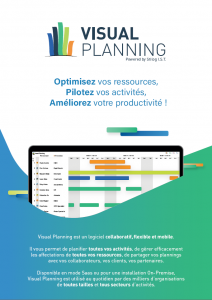What Is Muda?
Muda is a term that comes from the Japanese efficiency model of Lean Processes Management. It means waste, which is added time and expense in your process that isn’t necessary to achieve excellent results. In fact, when muda is present in the process, you may have subpar results no matter how hard everyone is trying.
Muda comes in seven forms:
- Overproduction: making too much of something
- Waiting: time on hand that is not being used for productive purposes
- Transportation: transporting goods or people in a manner that isn’t efficient or necessary
- Processing: overproducing a good or service, such as creating a part that’s well above spec without any need for doing so
- Stock/Inventory: having too much of a supply or raw good on hand, which ties up cash and can lead to additional waste if the inventory is time-sensitive
- Movement: wasting movement with inefficient processes or work area designs
- Rework: having to redo work because previous work was defective
How Collaborative Solutions Remove Muda
Every type of muda costs your business time and money. Consider this: If an HVAC tech is sent out to a job with the wrong equipment and has to return to the office to get the right tools, that’s a waste of movement and transportation. That’s an entire round trip the tech should not have had to make, and perhaps an hour or more wasted out of their day. That hour costs the company, and if you add up a little Muda here and there, it can represent a huge expense by the end of the year.
Collaborative solutions help you carve muda out of your processes for a better bottom line. Here are five ways these solutions can help you save time and money by reducing waste.
1. Dynamic and Seamless Scheduling
Scheduling can be one of the most tedious tasks for a manager, and that’s true whether you’re trying to cover shifts in a restaurant or attempting to align your field service resources with this week’s customer needs. The fact that many people attempt to manage this process on basic spreadsheets makes it even more tedious and creates additional room for error.
When you use a non-collaborative option to create your schedule, you might find yourself dealing with several problems:
- That the solution may not have been designed with scheduling in mind, which means it doesn’t have fail-safes to keep you from double scheduling or over-scheduling an employee
- The solution might not be dynamic, for example, if you create a schedule in Excel and then print or otherwise share it with your staff, any changes you make later have to be reshared and might not be seen in time by employees
Collaborative solutions, on the other hand, are dynamic. Changes you make roll out immediately across all devices and access points, and employees may even receive a heads up via emails, texts, or platform notifications. Solutions like Visual Planning’s field service team software provide visual cues and drag-and-drop functionality that help you quickly create viable schedules without common errors such as double booking.
Potential Muda saved: overproduction, waiting, transportation, and rework
2. Resource-Based Assignment to Reduce Error Rates
Intelligent collaborative solutions let you build rule sets (and rely on relevant out-of-the-box rules) to make scheduling even more efficient. Rulesets reduce the likelihood that the wrong person is scheduled for a job or that a person is scheduled to handle an installation before the right equipment arrives.
They can also help managers quickly pick the right resources for a job by using filters and tags. For example, you might want to send a plumber with shower and tub installation experience who you’ve previously tagged as being great with nervous or picky clients. Sending the right plumber now makes it less likely someone will have to return to the job site later.
Potential Muda saved: waiting, transportation, movement, and rework
3. Mobile Applications for Enhanced Communication
One of the main points of collaborative solutions is that they are, indeed, collaborative. They allow everyone to be in on planning and implementation of work in an appropriate manner, and that includes people who are out in the field.
Mobile applications let technicians and other field service techs or sales reps stay in-the-know about changes to the schedule or updates from the office. It also lets them access necessary information to do their jobs well and communicate as needed with the office.
Some examples of how mobile app access help save your business time and money include:
- Field service reps can quickly access training documents or chat with someone at the office to get clarification, reducing the need to return to a job later or the risks that jobs will include errors
- Dispatch can push schedule changes or priorities out immediately and all field service reps can see them
- Reps can carry digital versions of all paperwork and contracts, so there’s never a need to return to a location because paperwork was forgotten or lost
Potential Muda saved: waiting, over-processing, transportation, movement, and rework
4. Data Tracking to Ensure Appropriate Inventory and Equipment
Great collaborative solutions don’t just help people manage people. They incorporate all resources required to get work done efficiently and without error — including raw goods, tools, and equipment.
Data tracking options within Visual Planning solutions let you incorporate non-human resources for a fuller look at upcoming jobs and needs. For example, if the team is building a new garage addition next week, a collaborative scheduling and project management solution can tell you:
- Who is available to do the work? You can see at a glance whether there’s enough manpower and if all required skills are covered, giving you time to source an electrician or other specialist if necessary.
- What equipment and tools are required? You can ensure inventory is correct and order items as needed. Equipment checklists generated from these reports can also help staff stock vans and trucks to reduce coming and going from the site.
- Do you have competing priorities? Such as another job that requires the same skill sets, so you can plan ahead with the team to move seamlessly between sites.
Potential Muda saved: waiting, inventory, over-processing, overwork, transportation, movement, and rework
5. Real-Time Schedule Notifications and Updates
Finally, when collaborative solutions bring teams together so that everyone is on the same page about priorities and scheduling, you reduce the overall friction in all your processes. Employees know they’ll receive updates about new priorities in the most efficient manner possible, so they can attend to their work without worrying about surprises back at the office or whether they’re headed to the right customer next.
It’s common for field reps or others who don’t work in the main office to feel left out of communications, which can devalue their contributions. Collaborative communication can also help every person on your team feel like a valued part of the process. That boosts employee morale, which in turn, can boost production and reduce errors.
Potential Muda saved: over processing, overwork, transportation, and rework
Invest in Collaborative Solutions to Reduce Waste for Your Business
Resource scheduling and other collaborative solutions from Visual Planning let you find, capture and get rid of Muda. Which, in turn, leads to a range of benefits, from happier employees to a more robust bottom line.
Manale is a passionate about digital marketing. She joined STILOG I.S.T in 2018.
She brings SEO & SEA expertise, email marketing and creative content marketing to create a great brand experience for Visual Planning customers.



